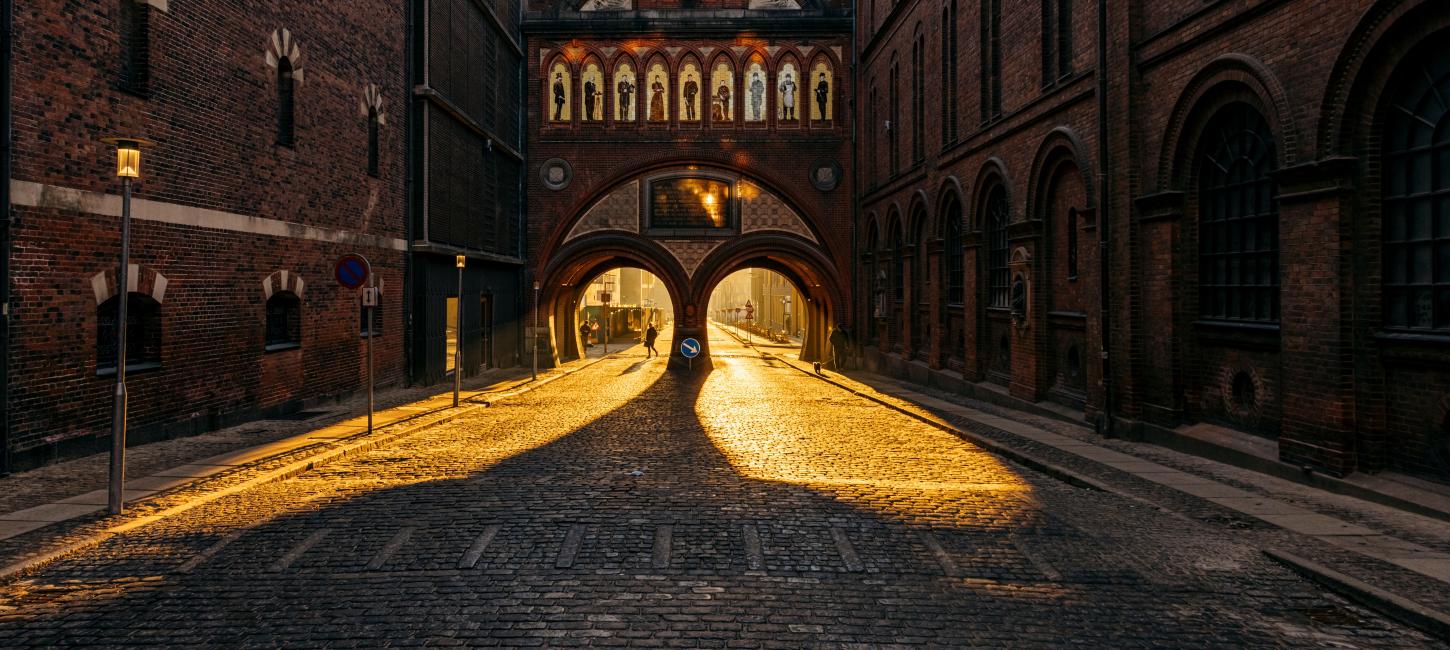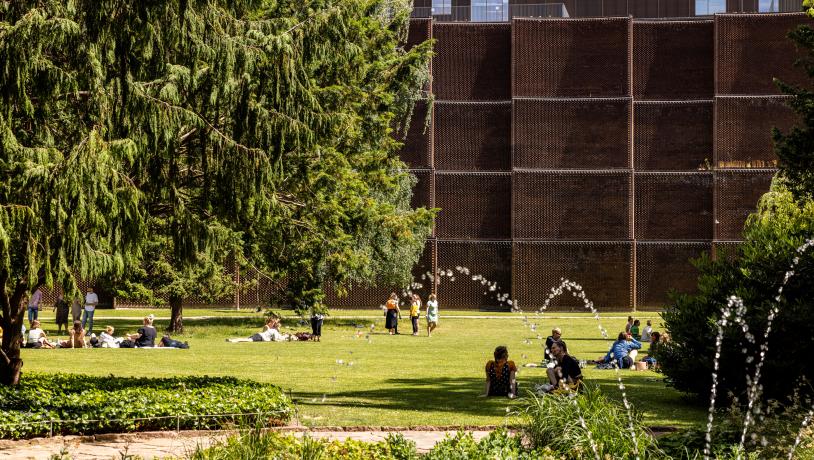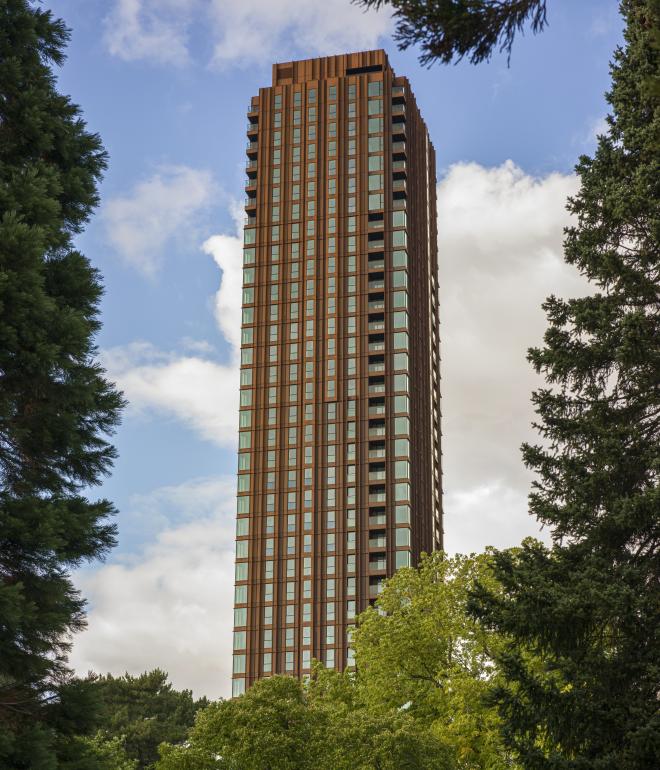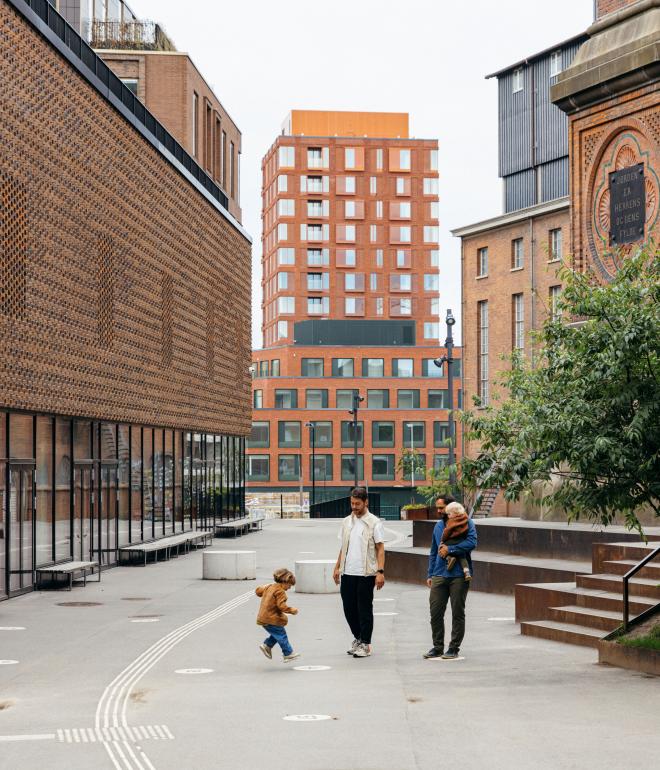Copenhagen is UNESCO-UIA World Capital of Architecture in 2023
Copenhagen manages a one-year programme with a focus on the future of architecture. Discover the city’s unique approach to citizen-centric urban desig...

A strong cultural heritage comes to life in the recently renovated neighborhood, The Carlsberg City District, a place embedded in the history, culture, and science of the world-renowned Carlsberg Brewery. A unique neighbourhood, where historical buildings are flanked by modern residencies.
The historical brewing era has left behind exceptional architectural and artistic buildings and landmarks embedded in the innovation and values of the two brewers.
The Carlsberg City District is a unique neighbourhood, deeply rooted in the history of the Copenhagen-founded brewery Carlsberg. The district’s ground used to be a former “island”, in the sense that it used to be a closed industrial ground. This brewing era has left behind a distinct fundament and exceptional heritage for the district to be built upon, handing the neighbourhood various presents in the form of historical buildings and industrial and scientific history.
This cultural heritage is due to the two brewers J.C. Jacobsen and his son Carl Jacobsen. Their respective identities have both contributed to the atmosphere and development of The Carlsberg City District. While the father, J.C. Jacobsen, was busy with science and research, he revolutionized the brewery process in Europe, sharing his knowledge and discoveries with the entire world for free. Whereas his son Carl Jacobsen had a strong passion for art and culture, making these elements a substantial part of the workers’ everyday life. These are values all thought out in the district’s design, keeping the past rooted in the future.
Carlsberg's respect for good construction, the curiosity of science, and their openness towards culture and cultures have been the inspiration and point of departure for the way the district has been devised.
The development of The Carlsberg City District takes advantage of the existing architecture and the gifts they have left behind. This historical architecture is not necessarily the most staggering architecture, but in many of the cases it is simply good and well thought through. It is dense, it is communal, and it is made in a perfect human scale.

Photo:Andreas Raun Rosendahl
Inspired by the Carlsberg Brewery, the project and urban strategy are based on the same four pillars as the brewery. Here J.C. Jacobsen represents the production and science pillars, whereas Carl Jacobsen represents the art and culture pillars. Afterwards, the urban life strategy divided the district into 10 separate zones. Here each zone has distinct characteristics and identities. For example, zone 1 represents The Meeting Zone, zone 3 is for International Outlook and Art, and zone 7 is The Green Community. Every zone is created with the intention of contributing to a diverse and vivid city district.
Simultaneously The Carlsberg City District also has been modernized with a non-Danish frame of reference, as it is a project where they have chosen to build in height. Inspired by the medieval Italian city San Gimignano, known as the city of towers, the Carlsberg City District will feature nine high-rise buildings. At the same time, the urban life strategy focuses on maintaining the human scale by creating a varied pattern of passages and twenty-five formations of spaces in the area. It is also these space formations which have been the catalysts of the zoning of the district. The district becomes a unique combination of green recreational areas, but common for all of them is their mix of classic and modern expression.


The City District’s location between Valby, Frederiksberg, and Vesterbro will play an integral part in the neighborhood, emphasizing the uniqueness of building a new neighborhood in the middle of the city, rather than expanding the city.
From the 1st of December 2023, Home of Carlsberg will also open its new cultural attraction in the old brewery courtyard, J.C. Jacobsen’s first brewery on Valby Hill. The attraction will unfold the past, present, and future story of the Carlsberg family through a large interactive exhibition. The cultural attraction will also include a historic and protected area with a new restaurant and bar, the opportunity to experience the horse stable with the majestic brewing horses, their spectacular bottle collection, architectural buildings, beer tastings, as well as guided tours in the old cellars, which will reveal old secrets and stories.
A well-thought and executed urban strategy has resulted in a diverse and unique gastronomic and cultural scene in The Carlsberg City District that gives them an obvious international orientation and pinpoints them as a cultural, historical place.
Besides creating an entire brewery district, the two Carlsberg brewers also influenced an affected other architectural landmarks and developments in Copenhagen.
Download a selection of pictures of The Carlsberg City District in Copenhagen. Press photos - The Carlsberg City District. The photographer must be credited.

Senior Manager – Press & PR